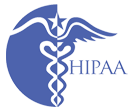All about Radiology Transcription
Radiology is a branch in medicine that aids achieving healing breakthroughs, promoting wellness of individuals, and assisting physicians in arriving at proper diagnostic decisions.
As the name indicates, Radiology involves study of images using radiation emission toward diagnosis or treatment of diseases found within an individual’s body. Modern Imaging Technique helps pinpoint the patient’s condition accurately while supporting proper treatment that avoids the disease getting worse.
Role of a Radiology Transcriptionist
Radiology transcription deals exclusively with practitioners’ unique documentation requirements related to Radiology. The diagnoses and treatment quality delivered by physicians greatly depends on the accuracy and reliability of the Radiology Transcription. This necessitates efficiency and expertise on the part of the radiology transcriptionist that has a bearing on patient well-being.
Various Modern Imaging Technologies that Radiology Transcriptionists Need to Understand
- Magnetic Resonance Imaging (MRI)
- Computerized Tomography (CT)
- X-Rays
- Ultrasound Imaging
Based on the findings from any of the above mentioned imaging technologies, the specialist makes interpretations—it is the responsibility of the radiology transcriptionist to note accurately the statement of the specialist, along with his views and all medical terminology. It is also expected of the transcriptionist to document the patient’s conditions and imaging-related information, which may later be used as evidence should there be any treatment dispute.
Not just diagnoses, radiology transcriptionists need to record treatments and procedures as well, namely, radiation therapy and other processes. Progress of the patient may be tracked using this and this assists the Radiologist in managing treatment accordingly.
Crucial Parameters that aid Accurate Radiology Transcription
Depending on the patient need and radiologist’s preference, radiology transcripts may be produced in varied formats. The primary objective is to come up with accurate transcripts that are reliable and offer convenience to practitioners.
Following factors are needed, based on which a diagnostic report may be prepared:
- Case Background
- Diagnosis Method
- Details of Imaging Technology used
- Observation and Views
- Overall Finding /Decision
Since such complex elements of radiation technology is involved, radiology transcriptionists have to be trained to handle highly sensitive assignments and experienced to produce authentic and clear transcripts.
Skills Expected from Radiology Transcriptionists
Radiology Transcription includes several specialty areas such as Cardiology, Pulmonology, Orthopedics, and Immunology. Having to work among such crucial departments, the radiology transcriptionists are expected to possess expertise in as many medical specialties as possible. They also must be capable of furnishing all the critical findings in an accurate and distinct way that can be observed and completely understood by the radiologists.
Radiology transcriptionists are expected to possess the following credentials:
- Preparatory qualification related to medicine or years of experience in radiology dictation service
- Familiarity with different medical information technologies and software
- Capacity to work under pressure and ability to meet deadlines
- Strong reporting and typing skills
- Good listening & understanding skills
Due to the nature of treatment in radiology that constantly demands urgent attention and response, and radiologists mostly requiring quick as well as accurate medical imaging results, radiology transcriptionists are expected to provide timely and meticulous radiology transcription solutions!



